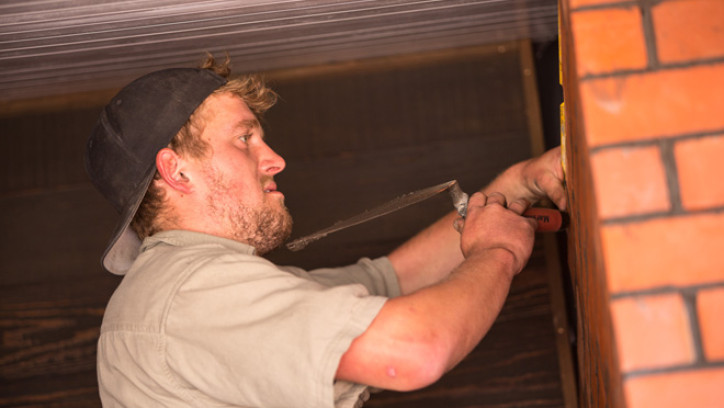Exterior building materials
Last updated: 9 August 2023

Consider building materials that come from sustainable sources, contribute to energy efficiency, and don't harm human health.
Choosing exterior building materials
Exterior building materials include materials for roofing and cladding, walls (including framing), foundations, and window/door frames.
Some materials may release emissions which can harm human health, either during manufacture or after they are installed. Some come from sustainable sources. Some can be recycled or reused. Some require more maintenance. Some may be more durable or more suitable than others for your climate and home design.
Often, choosing materials is about balancing these factors. For some, sourcing and sustainability are more important; for others it may be durability or recyclability and cost is a factor in most cases. The best thing you can do is be informed about what you are using and make the choice that fits your situation and needs.
Exterior building material options
Your choice of the exterior material will depend on your personal priorities. Factors may include things like visual appearance, ease of maintenance, the use of natural materials and the suitability for thermal mass for heat storage. Also, your site, climate and house design will influence the best options for a durable, strong exterior structure.
Durability
Having a durable structure means considering:
- Efficiency of use – if it lasts longer, it won't need to be replaced as often, which benefits both your pocket and the environment. All materials need maintenance and will eventually reach the end of their life, so it’s still important to consider if they can be safely disposed of.
- Natural durability – some materials need to be treated in some way to improve long-term durability. Naturally durable exotic timbers such as macrocarpa, larch, cypress and others can be used untreated as framing in specific areas where there is no risk of moisture. Check the potential toxicity, durability, maintenance and disposal requirements of the materials you are planning to use.
- Design for durability – use of eaves, flashings, and foundations ('good hat and good boots') to protect from wind, rain and corrosive elements will minimise the risks from deterioration. Good design can help to extend the life of building materials.
Maintenance
When you're choosing building materials, think about:
- whether you'll need to use treatments, finishes and coatings for protection against moisture, decay and/or insects
- whether you'll need to maintain materials using products that are potentially harmful to you and/or the environment and, if so, how you'll dispose of them
- whether regular maintenance will be needed for ongoing durability – this is especially important in corrosive climates
- whether the roofing material is suitable for water collection if you want to collect rainwater for drinking or watering the vege garden.
Sustainability and life-cycle
Sourcing
If you choose locally sourced materials, there’ll be less need for transportation, and it'll also be easier to find out how the product is made and performs in local conditions.
Imported materials can be harder to assess for environmental compliance – although some imported materials may have a higher recycled content and better functionality than locally sourced ones.
Consider:
- asking for Environmental Product Declarations (EPDs), which are independently verified and registered documents that communicate transparent and comparable information about the life-cycle environmental impact of products.
- looking for independent environmental labels such as Eco Choice Aotearoa or Toitū Envirocare
- looking for evidence that the manufacturer uses environmental management standards (such as ISO 14001) and systems (such as Zero Waste and The Natural Step).
- looking at manufacturers' websites or marketing information to find out how much effort the relevant industries are putting into environmental management, natural area regeneration, and minimising effects on local communities
Many materials used for exterior structures are made in New Zealand. PVC, bauxite for aluminium, some structural steel, some fibre cement, gypsum plaster and aerated concrete blocks are imported. Most bricks and clay roof tiles used in New Zealand are imported from Australia and other countries.
Impact of extraction and processing
The extraction, processing and manufacturing of building products produces greenhouse gas emissions. It’s important to balance the amount of greenhouse gas emissions in the extraction/processing/manufacturing process against the energy and carbon savings and health benefits from the finished material. A material that produces a lot more carbon emissions in its manufacture might save energy and carbon during the life of your home by reducing the need to heat or cool, or lasting a lot longer than alternative materials.
You can minimise the impact of the build by looking for products which:
- use renewable raw materials that can be regenerated naturally to replace those used
- are biodegradable or fully recyclable at the end of life
- have a recycled or reused component
- are based on raw materials that are managed with a long-term view, and with efforts to regenerate any mined areas to manage their impact on the environment.
To reduce environmental impacts on land and waterways, look for manufacturers that restore any natural areas the extraction process affects.